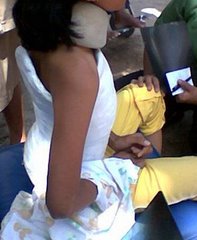Low-Intensity Laser Irradiation Stimulates Bone Nodule Formation Via Insulin-Like Growth Factor-I Expression in Rat Calvarial Cells
Noriyoshi Shimizu, Kotoe Mayahara, Takeshi Kiyosaki,
Akikuni Yamaguchi, Yasuhiro Ozawa, Yoshimitsu Abiko
Background and Objective: We previously reported that low-intensity laser irradiation stimulated bone nodule formation through enhanced cellular proliferation and differentiation. However, the mechanisms of irradiation are unclear. Thus, we attempted to determine the responsibility of insulin-like growth factor (IGF)-I for the action observed.
Study Design/Materials and Methods: Osteoblast-like cells were isolated from fetal rat calvariae and cultured with rat recombinant (r) IGF-I, IGF-I antibody (Ab), and/or the cells were irradiated once (3.75 J/cm2) with a low-intensity Ga-Al-As laser (830 nm). The number and area of bone nodules formed in the culture were analyzed, and IGF-I expression was also examined.
Results: Treatment with rIGF-I significantly stimulated the number and area of bone nodules. This stimulatory effect was quite similar to those by laser irradiation, and this stimulation was abrogated dose-dependently by treatment with IGF-I-Ab. Moreover, laser irradiation significantly increased IGF-I protein and gene expression.
Conclusion: The stimulatory effect of bone nodule formation by low-intensity laser irradiation will be at least partly mediated by IGF-I expression. Lasers Surg. Med. 39:551-559, 2007. © 2007 Wiley-Liss, Inc.
Key words: low-intensity laserl bone formation; IGF-I; bone nodule; calvarial cell; osteoblast








